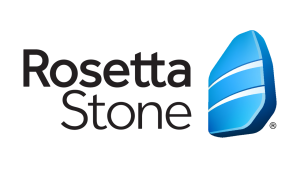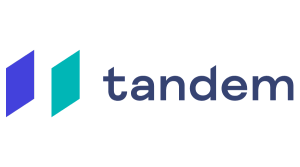Introduction – Best Language Learning Tools
Language learning is the process of acquiring the skills and knowledge necessary to understand, speak, read, and write in a new language. It’s a valuable skill that can open up new opportunities for communication, cultural understanding, and personal growth. Select a language that aligns with your interests and goals. Some languages may be more useful or relevant to your life and career than others. Consistency is key. Dedicate regular time to practice listening, speaking, reading, and writing in the target language. Daily practice, even if it’s just for a short time, can be highly effective.
Remember that language learning is a journey, and everyone progresses at their own pace. The key is to stay committed and enjoy the process of discovering a new language and culture.
There are several language learning tools and platforms that offer interactive lessons, real-time translations, and practice exercises to help you learn a new language effectively. Here are seven popular ones:
1. Duolingo
Duolingo is a popular language-learning platform that offers a fun and interactive way to learn new languages. Duolingo offers courses in over 30 languages, making it a versatile choice for learners interested in various languages, including widely spoken ones like Spanish, French, and German, as well as less commonly studied languages. The platform covers various language skills, including speaking, listening, reading, and writing. It breaks down language learning into bite-sized lessons and skills, making it easy for users to learn at their own pace. While Duolingo is a popular and accessible language learning platform, it’s important to note that it may not provide the same depth of language learning as more comprehensive courses or immersion programs. It can be a valuable tool for beginners and those looking to supplement their language learning, but for advanced language proficiency, additional resources and practice may be necessary.
2. Rosetta Stone

Rosetta Stone is a well-known language learning program that has been used by millions of people worldwide to learn new languages. Rosetta Stone is known for its immersive approach to language learning. It aims to teach languages in a similar way that individuals learn their native languages—through immersion, context, and visual cues. This means that Rosetta Stone courses often avoid using translations and focus on teaching new vocabulary and grammar in the target language. While Rosetta Stone has been a popular choice for language learners, its immersive approach may not suit everyone. Some users prefer a more traditional method with translations and explicit grammar explanations. Additionally, the cost of Rosetta Stone can be higher compared to some other language learning options, so it’s important to consider your learning style and budget when choosing a language learning program.
3. Babbel
Babbel is another popular language-learning platform that is known for its focus on practical language skills and real-life conversation. The platform offers a variety of interactive exercises, including listening comprehension, speaking practice, multiple-choice questions, and more. These exercises reinforce language skills and aid in retention. Babbel’s approach is characterized by its focus on practicality and conversation skills. It aims to provide learners with the tools they need to engage in meaningful conversations in their target language. While it may not be as immersive as some other language learning methods, it is well-suited for learners who want to quickly acquire practical language skills for travel, work, or personal enrichment. Some Babbel courses can be downloaded for offline learning, which is convenient for users who want to study without an internet connection.
4. Memrise

Memrise is a language learning platform that focuses on vocabulary acquisition and memory improvement. It offers a unique approach to language learning that emphasizes memorization and spaced repetition. Memrise’s approach to language learning, with its heavy emphasis on vocabulary and memory retention, can be particularly beneficial for learners who want to quickly build a solid foundation of words and phrases in their target language. However, it’s important to note that Memrise may not provide as comprehensive a language learning experience as some other platforms, especially for those looking for in-depth grammar instruction and conversational practice. Memrise offers both free and premium subscription options. The premium version, called “Memrise Pro,” provides additional features such as offline learning, a personalized learning experience, and more advanced statistics.
5. Mango Languages
Mango Languages is a language learning platform known for its practical and conversational approach to language education. The platform provides real-world context and cultural insights, which help learners understand how the language is used in everyday situations and gain cultural awareness. Mango Languages is well-suited for individuals who want to focus on developing practical language skills for communication and everyday use. Its conversational approach and real-world context make it a valuable tool for travelers, expatriates, and anyone looking to engage in conversations in their target language. Additionally, the availability of courses in numerous languages makes it accessible to a wide range of learners. Learners can earn certificates upon completing specific Mango Languages courses, which can be useful for tracking their achievements.
6. Tandem

Tandem is a language exchange app and platform that connects language learners with native speakers for conversation practice. It offers a unique approach to language learning by facilitating language exchange partnerships. Tandem is especially beneficial for language learners who want to practice their speaking and listening skills in a practical and real-world context. It provides an opportunity to engage in meaningful conversations with native speakers, helping learners gain fluency and cultural insights. Additionally, Tandem is a valuable platform for making connections with people from around the world who share a passion for language learning and cultural exchange. While Tandem offers a free version with basic features, it also offers a premium subscription called Tandem Pro. Tandem Pro includes additional benefits such as unlimited translations, more search filters for finding language partners, and priority support.
7. FluentU
FluentU is a language learning platform that stands out for its immersive and engaging approach, using real-world videos to help learners improve their language skills. FluentU’s approach to language learning through real-world videos can be particularly engaging for visual and auditory learners who prefer to learn in context. It helps users develop their listening and comprehension skills while exposing them to the culture and nuances of the language. However, it’s important to note that FluentU may not provide as structured grammar instruction as some other language learning platforms, so learners may want to supplement their studies with additional resources if they require more comprehensive grammar learning. FluentU offers both free and premium subscription options. The premium subscription provides full access to the platform, including unlimited video watching, interactive subtitles, and more.
Create Your Own Website
Edufire is a versatile WordPress theme designed for educational websites, including LMS platforms, eLearning sites, universities, schools, and more. It’s highly adaptable and compatible with the LearnDash LMS plugin, enabling you to create and sell courses with ease. With Edufire, you can build responsive and attractive educational websites for various niches.
Conclusion – Best Language Learning Tools
In conclusion, there are several effective language learning tools and platforms available to learners today. Each of these tools, such as Duolingo, Rosetta Stone, Babbel, Memrise, Mango Languages, Tandem, and FluentU, offers unique features and approaches to language acquisition. The choice of which platform to use depends on individual preferences, goals, and learning styles. Whether you prefer gamified lessons, immersive experiences, practical conversations, or exposure to real-world content, there is likely a language learning tool that suits your needs and can help you on your journey to becoming proficient in a new language.
Interesting Reads:
10 Best Public Relations Professional’s Tools for Managing Organizations








